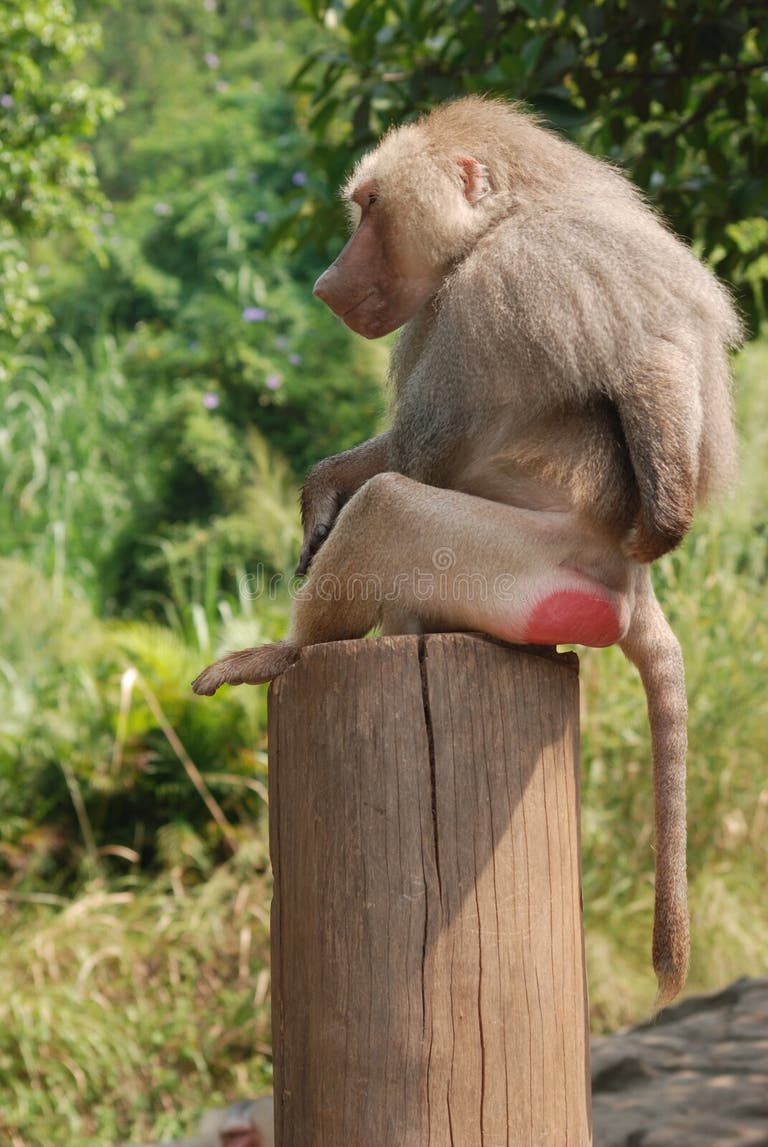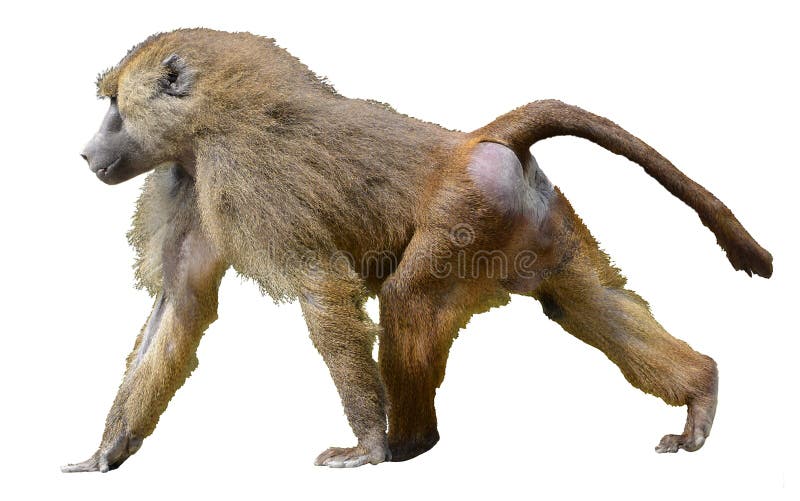Baboon buttocks have long fascinated scientists and nature enthusiasts alike. These distinctive features are not just a striking physical characteristic but also serve essential purposes in the lives of baboons. Understanding the anatomy, function, and significance of baboon buttocks provides valuable insights into the evolutionary adaptations of these remarkable primates.
The vibrant coloring and prominent appearance of baboon buttocks play a crucial role in their social interactions and survival. From aiding in communication to supporting long-distance travel, these features highlight nature's ingenuity in solving complex biological challenges.
As we delve deeper into the world of baboon buttocks, we'll explore the science behind their unique characteristics, their role in baboon society, and their importance in the broader context of primate evolution. This article aims to provide a comprehensive understanding of this fascinating subject, supported by scientific research and expert analysis.
Read also:Who Is Sean Hannitys Exwife Unveiling The Story Behind The Spotlight
Table of Contents
- The Anatomy of Baboon Buttocks
- Evolutionary Significance
- Key Functions and Adaptations
- Social Role in Baboon Society
- The Science Behind the Coloration
- Health Indicators and Reproductive Signals
- Variations Among Baboon Species
- Recent Research Findings
- Conservation Efforts and Challenges
- Conclusion and Key Takeaways
The Anatomy of Baboon Buttocks
Baboon buttocks are a marvel of evolutionary design, characterized by their vibrant coloration and thick, calloused skin. The ischial callosities, as these structures are scientifically known, are specialized areas of thickened skin that provide cushioning and protection during prolonged sitting. These features are unique to Old World monkeys and are particularly prominent in baboons.
Key Features of Baboon Buttocks
- Thickened skin layers that reduce pressure on underlying tissues
- Vibrant coloration, ranging from pink to deep red, depending on the species
- Highly vascularized tissue that supports blood flow and temperature regulation
Studies conducted by primatologists suggest that the anatomy of baboon buttocks has evolved to meet the specific needs of their arboreal and terrestrial lifestyles. The combination of cushioning and durability makes these features essential for their daily activities.
Evolutionary Significance
The evolution of baboon buttocks represents a fascinating example of natural selection at work. Over millions of years, these primates have developed specialized adaptations that enhance their survival and reproductive success. The thickened skin and vibrant coloration of baboon buttocks are not just random traits but are the result of selective pressures in their natural environment.
Adaptive Advantages
- Enhanced comfort during prolonged sitting on rough surfaces
- Improved communication through visual signals
- Increased attractiveness to potential mates
According to research published in the Journal of Evolutionary Biology, the bright coloration of baboon buttocks may have evolved as a secondary sexual characteristic, playing a crucial role in mate selection and social hierarchy.
Read also:Berta A Comprehensive Guide To Understanding Her Life Legacy And Influence
Key Functions and Adaptations
Beyond their aesthetic appeal, baboon buttocks serve several vital functions that contribute to the survival and success of these primates. These adaptations are critical for their daily activities and social interactions.
Primary Functions
- Providing cushioning for prolonged sitting
- Facilitating communication through visual cues
- Indicating health and reproductive status
Research conducted by primatologists at the University of Oxford highlights the importance of these functions in maintaining social cohesion and reproductive success within baboon groups.
Social Role in Baboon Society
In baboon societies, the appearance and condition of buttocks play a significant role in social interactions. These features serve as visual signals that convey important information about an individual's status, health, and reproductive readiness. By observing the coloration and condition of a baboon's buttocks, other members of the group can make informed decisions about social interactions and alliances.
Social Signaling
- Indicating dominance and submission
- Facilitating grooming and bonding behaviors
- Attracting mates during the reproductive season
Studies suggest that the vibrant coloration of baboon buttocks is particularly important during the mating season, when females with the most brightly colored buttocks are often the most sought-after mates.
The Science Behind the Coloration
The striking coloration of baboon buttocks is the result of complex physiological processes. The vibrant hues are produced by high levels of blood flow to the area, combined with the presence of specialized pigments in the skin. This coloration is not only visually striking but also serves important biological functions.
Factors Influencing Coloration
- Blood flow and vascularization
- Hormonal changes during the reproductive cycle
- Environmental factors such as temperature and humidity
Research published in the Journal of Zoology suggests that the coloration of baboon buttocks may also serve as an indicator of overall health and fitness, making it an important factor in mate selection.
Health Indicators and Reproductive Signals
The condition of baboon buttocks can provide valuable insights into an individual's health and reproductive status. Brightly colored buttocks are often associated with good health and high reproductive potential, while dull or discolored buttocks may indicate underlying health issues. This visual cue is particularly important in the context of mate selection and social interactions.
Signs of Good Health
- Vibrant coloration indicating high blood flow
- Smooth, unblemished skin free from infections
- Consistent coloration throughout the reproductive cycle
Primatologists have observed that baboons with healthy, brightly colored buttocks are more likely to form strong social bonds and achieve reproductive success.
Variations Among Baboon Species
While all baboon species share the characteristic of prominent buttocks, there are notable variations in size, coloration, and function among different species. These differences reflect the unique evolutionary pressures faced by each species in their respective habitats.
Species-Specific Characteristics
- Hamadryas baboons: Bright red buttocks with minimal variation
- Chacma baboons: Darker, more muted coloration with greater variability
- Yellow baboons: Moderate coloration with a focus on social signaling
These variations highlight the diversity of evolutionary adaptations within the baboon family and underscore the importance of studying each species individually.
Recent Research Findings
Recent advancements in primatology have shed new light on the role of baboon buttocks in their daily lives and social interactions. Cutting-edge research using advanced imaging techniques and behavioral analysis has provided valuable insights into the biological and social significance of these features.
Key Findings
- Coloration changes correlate with hormonal fluctuations
- Buttocks serve as key indicators of social status
- Unique adaptations enhance communication and cooperation
These findings underscore the importance of baboon buttocks in understanding primate behavior and evolution, providing a foundation for future research in this field.
Conservation Efforts and Challenges
Despite their fascinating adaptations, baboons face numerous threats in the wild, including habitat loss, hunting, and human-wildlife conflict. Conservation efforts aimed at protecting these primates must take into account the importance of their unique adaptations, including their distinctive buttocks, in maintaining healthy populations.
Conservation Strategies
- Protected habitats to preserve natural environments
- Community engagement programs to reduce human-wildlife conflict
- Research initiatives to better understand baboon behavior and needs
By addressing these challenges, conservationists hope to ensure the survival of baboons and the preservation of their remarkable adaptations for future generations.
Conclusion and Key Takeaways
In conclusion, baboon buttocks represent a fascinating example of evolutionary adaptation, serving essential functions in the lives of these remarkable primates. From providing cushioning during prolonged sitting to facilitating communication and attracting mates, these features play a crucial role in baboon society and survival.
As we continue to study and appreciate the complexity of baboon adaptations, it is essential to support conservation efforts that protect these animals and their habitats. Readers are encouraged to share this article, explore related topics, and contribute to the ongoing conversation about primate conservation and research.


